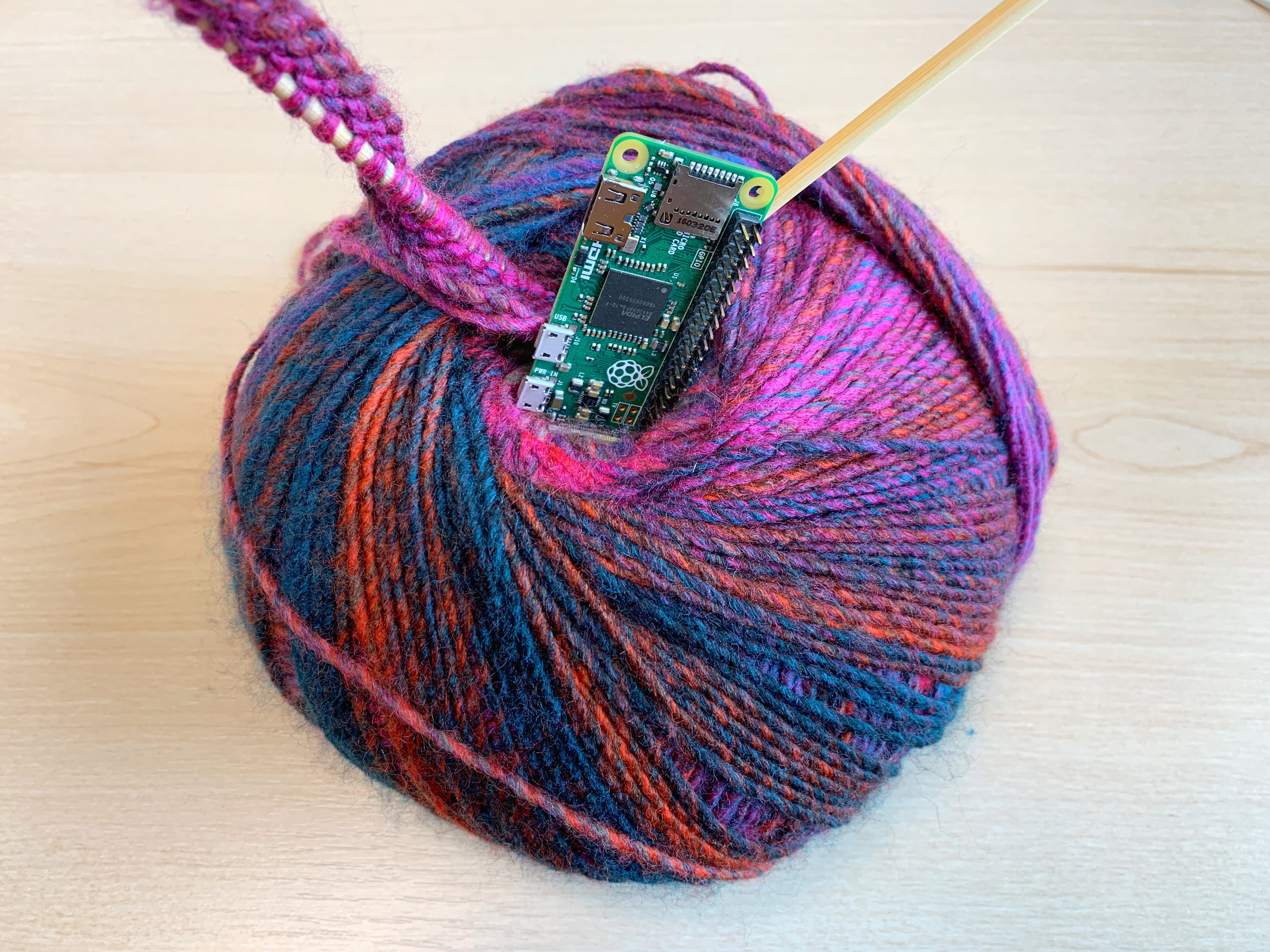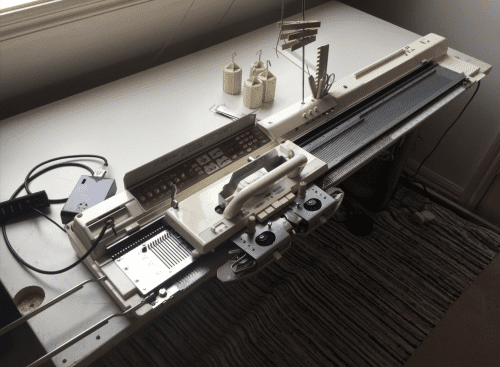Schlagwort: knitting
-

Fabric-licious Raspberry Pi projects
Reading Time: 2 minutesI’m currently (re)learning how to knit. Here are some textile-themed Raspberry Pi projects for the yarn-curious. The Raspberry Pi-powered loom Loom Operation The general sequence of events for running my Raspberry Pi controlled loom. The project was really a proof of concept idea rather than an actual production model. This video is…
-

Fabric-licious Raspberry Pi projects
Reading Time: 2 minutesI’m currently (re)learning how to knit. Here are some textile-themed Raspberry Pi projects for the yarn-curious. The Raspberry Pi-powered loom Loom Operation The general sequence of events for running my Raspberry Pi controlled loom. The project was really a proof of concept idea rather than an actual production model. This video is…
-

Networked knitting machine: not your average knit one, purl one
Reading Time: 4 minutesThe moment we saw Sarah Spencer‘s knitted Stargazing tapestry, we knew we needed to know more. A couple of emails later, and here’s Sarah with a guest blog post telling you all you need to know about her hacking adventure with a 1980s knitting machine and a Raspberry Pi. Knitting Printer! (slowest…
-

Traditional Knitwear and 3D Printing Combined to Create Clothing Inspired by Children’s Toys
Reading Time: 3 minutesDesigner and Royal College of Art graduate Lingxiao Luo is combining traditional knitting techniques and 3D printing to create garments that echo the playful style of children’s toys. As 3D printing becomes an increasingly popular tool in the world of fashion and art, the technology has been adapted to be compatible with other…


